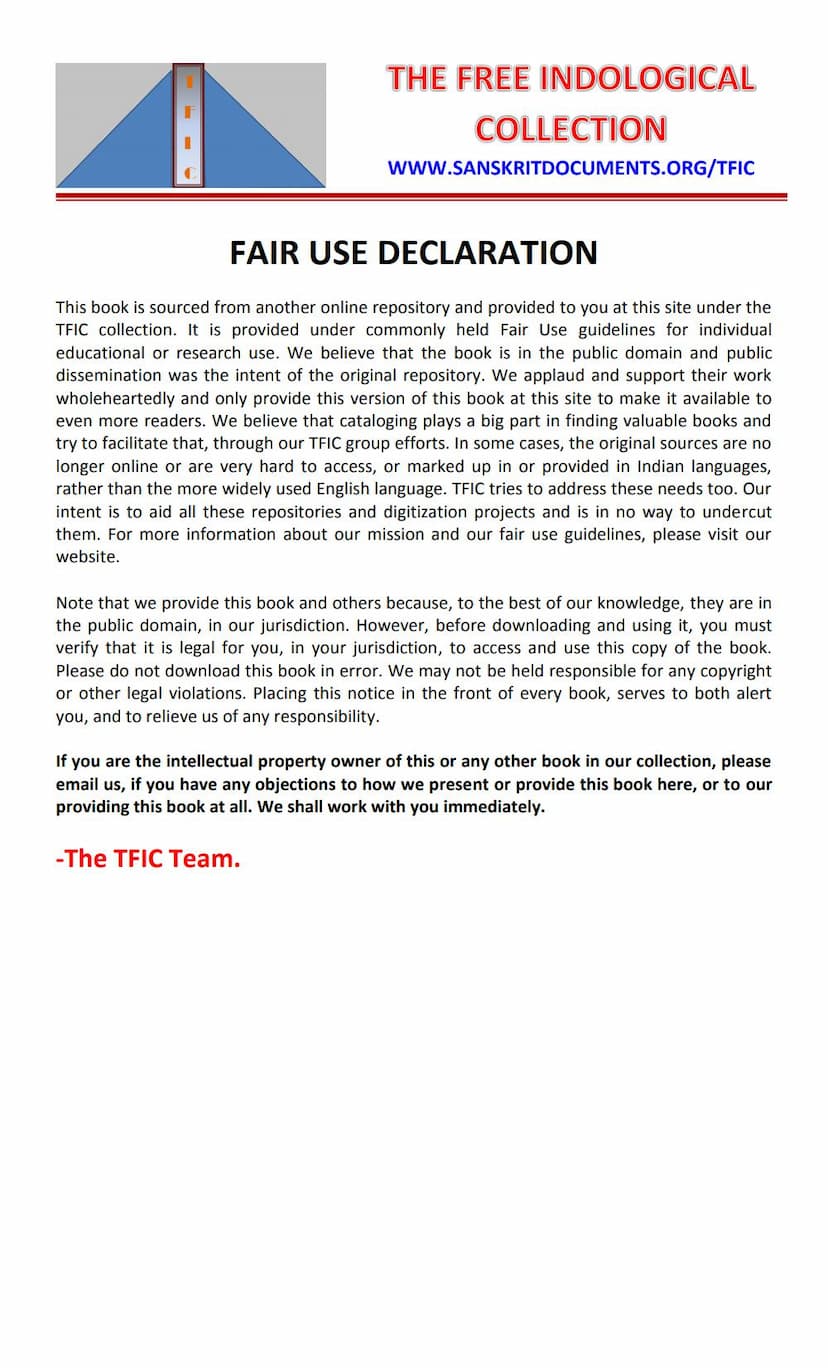Prolegomena To Prakritica Et Jainica
Added to library: September 2, 2025

Summary
This book, "Prolegomena to Prakritica et Jainica," edited by Satyaranjan Banerjee and published by the Asiatic Society in March 2005, serves as a foundational text for understanding Prakrit languages and Jainism. It comprises fifteen articles by esteemed scholars, aiming to provide a comprehensive overview of key aspects of these fields. The book is structured into three parts: Prakritica, Jainica, and Jain Literature.
Part I: Prakritica focuses on the Prakrit languages and includes essays on:
- Origin of Prakrit: Discusses the historical debate on whether Prakrit derived from Sanskrit or vice versa, referencing early grammarians and scholars like Hemacandra, Vākpatirāja, and Nāmisādhu, as well as modern Orientalists like R. Caldwell, J. Beames, M. Collins, and S.K. Chatterji, who explored influences from Dravidian and other languages. It also touches upon the classification of Prakrit words into Tatsama, Tadbhava, and Desi.
- Periods of Prakrit: Outlines the temporal classifications of Indo-Aryan languages, defining the Old Indo-Aryan (OIA), Middle Indo-Aryan (MIA), and New Indo-Aryan (NIA) periods, with specific timelines for MIA stages and their representative Prakrit types.
- Classification of Prakrit: Presents a broad categorization of MIA linguistic material, including religious Prakrits (Pali, Ardhamāgadhi), literary and dramatic Prakrits, those described by grammarians, extra-Indian Prakrits, inscription Prakrits, and popular Sanskrit.
- Prakrit Grammarians: Lists and discusses important Prakrit grammarians from both the Eastern and Western schools, acknowledging the existence of many lost or less-known works and authors.
- Names of the Prakrit Languages: Provides an alphabetical list of various Prakrit languages and dialects mentioned by grammarians and modern scholars.
- The Earliest Modern Scholars on Prakrit: Reviews the foundational work of early Western scholars like Hoefer, Lassen, Delius, Weber, Müller, Jacobi, and Cowell in the study of Prakrit grammar and literature.
Part II: Jainica delves into the Jain religion and its historical context, featuring essays on:
- A Brief History of Jain Research: Traces the academic study of Jainism from early reports in the 19th century, highlighting the contributions of scholars like Colin Mackenzie, H. Th. Colebrooke, H.H. Wilson, Albrecht Weber, Jacobi, Leumann, and Pischel, and discussing the challenges of manuscript access and textual criticism.
- Understanding Jain Religion in a Historical Perspective: Examines Jainism's historical trajectory, its relationship with other contemporary religious movements, the philosophical concepts of dharma and ahimsa, and the significant role of its Tirthankaras, particularly Rşabhadeva and Mahāvīra. It also discusses the philosophical underpinnings of Jainism, its cosmology, and its ethical framework.
- Schools and Sects in Jain Literature: Analyzes the diverse philosophical schools and religious sects mentioned within Jain canonical literature, often presented as opposing viewpoints that Jainism aimed to refute or integrate. It details specific schools like the Ājivikas, Brahmanical schools, Sāmkhya, Yoga, Śāśvatavādins, Puranists, Buddhists, and others, offering insights into their doctrines as presented from a Jain perspective.
- The Fourteen Guņasthānas: Explains the Jain concept of the fourteen stages of spiritual progress (Guņasthānas), detailing the progression from ignorance to omniscience and liberation, highlighting the role of karma and the possibility of relapses.
- Rşabhadeva: Focuses on Ādinātha or Rşabhadeva, the first Tirthankara, discussing his significance in Jaina hagiology, his lineage, epithets, the traditional accounts of his life, his role in establishing social order and the doctrine of ahimsa, and the historical worship and depiction of him in art and temples.
- Anekāntavāda and Language: Explores the Jain philosophical principle of anekāntavāda (the manysidedness of reality), its connection to the relativity of knowledge, and its application to linguistic and semantic analysis. It discusses concepts like syādvāda, the nature of substance (dravya), and the relationship between words, meanings, and grammatical structures, drawing parallels with modern linguistic theories of deep and surface structures.
- Jainism and Non-violence: Examines the central Jain tenet of ahimsa (non-violence), tracing its etymology and its pervasive influence across different aspects of Jain life, including food, trade, social behavior, and legal practices. It contrasts the Jain understanding of ahimsa with its presence in Vedic, Buddhist, and Hindu traditions, and discusses the intellectual critiques of other religious views within Jain literature.
- Political and Social Thoughts in Hemacandra (1088-1172 A.D.): Analyzes the political and social context of medieval India during Hemacandra's time, drawing insights from his literary works, particularly the Kumārapālacarita. It discusses administrative structures, the role of kings, the caste system, educational practices, and prevalent societal norms as reflected in his writings.
- Chronological Development of Jain Literature: Provides a comprehensive chronological chart of significant Jain literary works and authors, spanning from prehistoric times to the present day, compiled from various historical and scholarly sources. It also includes chronological developments of Jaina logic and śrāvaka literature.
In essence, "Prolegomena to Prakritica et Jainica" is a vital resource for anyone interested in the intricate relationship between the Prakrit languages and the rich philosophical, religious, and literary traditions of Jainism. It offers a scholarly exploration of foundational concepts, historical developments, and the diverse scholarly engagement with these subjects.